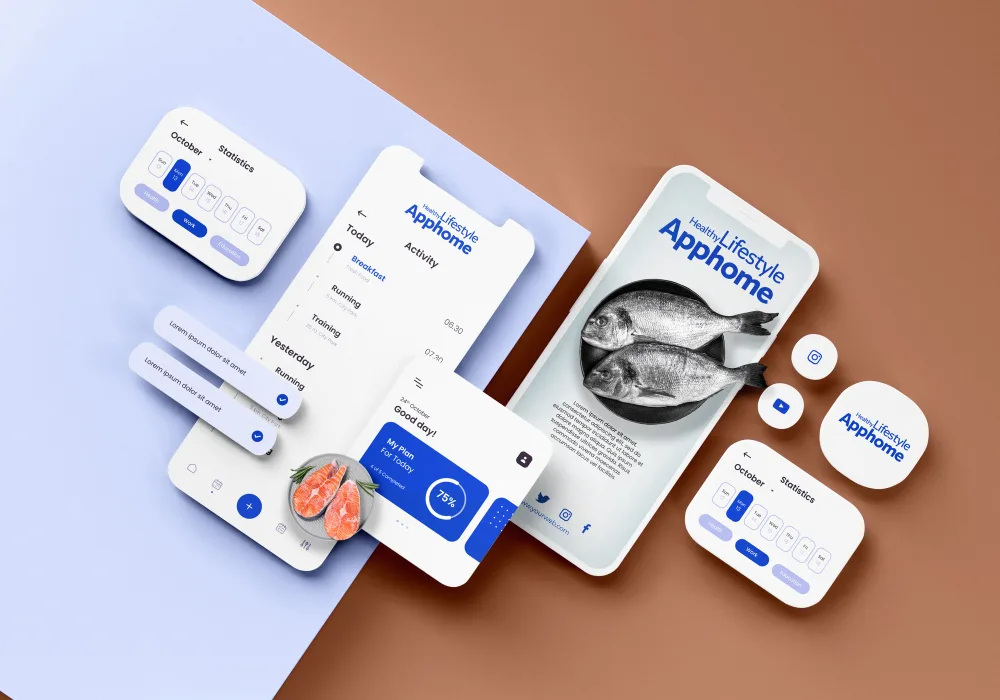Are you tired of spending countless hours developing software only to have users struggle to use it ? Enter usability testing – the secret weapon of successful software development . In this blog post, we’ll delve into the critical role that usability testing plays in creating user-friendly software and how earning an ISTQB Certification can elevate your career in this field . Get ready to optimize your development process and delight users with intuitive and efficient software solutions !
Introduction To Usability Testing
Usability testing is a crucial aspect of software development that focuses on the user experience and ensuring that the software meets their needs and expectations . It involves testing the usability, effectiveness and efficiency of a product by observing real users interacting with it .
The main purpose of usability testing is to identify any potential issues or limitations in the software’s design that may hinder its functionality or make it difficult for users to achieve their goals effectively . By conducting usability tests, developers can gather valuable insights from the end-users’ perspectives and use that feedback to improve their product before its official release .
Usability testing is an iterative process that should be conducted throughout the software development life cycle . Ideally, it should begin during the early stages of design and continue until after the product has been released . This approach not only helps in identifying problems early on but also saves time and resources in fixing them at later stages when they are more costly to rectify .
There are different types of usability tests, such as moderated vs unmoderated tests, remote vs on-site tests, task-based vs exploratory tests, etc ., each serving a specific purpose depending on the project’s nature and goals . One common method used in usability testing is "think-aloud" protocol, where users verbally express their thoughts while completing specific tasks using the software . This provides valuable insights into how users think and interpret different features of the product .
Moreover, usability testing can also involve collecting quantitative data through metrics like task completion rates, error rates, time spent per task, etc ., which can provide concrete evidence about areas that need improvement .
Incorporating usability testing in software development brings numerous benefits for both developers and end-users . For developers, it helps in identifying design flaws early on during development rather than releasing a flawed product to market . It also enhances overall user satisfaction by providing them with a high-quality product that meets their expectations . Additionally, having certification in usability testing, such as the ISTQB certification, can increase one’s credibility as a software developer and demonstrate their expertise in this critical aspect of the development process .
Usability testing is an essential practice in software development that ensures a user-friendly and functional product . By understanding its importance and incorporating it into their development process, developers can achieve higher levels of success and deliver products that meet users’ needs and expectations .
What Is The ISTQB Certification in Usability Testing ?
The ISTQB Certification in Usability Testing is a highly sought-after certification for those looking to specialize in software testing . It is specifically designed for individuals who have a keen interest and aptitude in the field of usability testing . This certification is recognized globally and provides professionals with a competitive edge in the job market .
So, what exactly is the ISTQB Certification in Usability Testing ? In simple terms, it is a specialized certification that focuses on evaluating the user-friendliness and functionality of software applications . It equips professionals with the necessary skills and knowledge to conduct effective usability tests and provide valuable insights to improve overall user experience .
One of the main reasons why this certification holds such high value is because usability testing has become an essential aspect of software development . With technology advancing at a rapid pace, users’ expectations are also on the rise, making it crucial for organizations to deliver functional and user-friendly software solutions . This has led companies to place great emphasis on hiring certified professionals who can effectively carry out usability testing processes .
Achieving this certification requires passing a comprehensive exam that covers various topics related to usability testing methodology, techniques, tools, best practices and quality assurance principles . It also requires hands-on experience in conducting tests across different platforms and devices . The exam assesses candidates’ ability to identify potential issues related to user interface design, navigation flow, accessibility, performance efficiency and other critical aspects of user experience .
In addition to providing individuals with an expert-level understanding of usability testing concepts, this certification also enables professionals to stay updated with industry standards and advancements through continuous learning opportunities offered by ISTQB . This ensures that they are equipped with the latest techniques and strategies required for successful usability testing .
Having an ISTQB Certification in Usability Testing not only opens up new career opportunities but also allows professionals to advance their careers within their current organization by demonstrating their expertise and competence .
Moreover, this certification serves as proof of one’s dedication to the field of usability testing, showcasing their commitment to delivering high-quality software that meets user expectations .
The ISTQB Certification in Usability Testing is a valuable asset for individuals looking to excel in this specialized field of software testing . It not only provides them with a thorough understanding of usability testing principles and techniques but also enables them to stand out in the competitive job market . With its global recognition and constantly updated curriculum, this certification is an investment in one’s career growth and success as a usability testing professional .
What Are The Benefits of Usability Testing For End Users ?
The ultimate goal of any software development project is to create a product that not only functions flawlessly but also provides an exceptional user experience . This is where usability testing comes into play . By conducting thorough usability testing, developers can ensure that their software meets the needs and expectations of the end users . Here are some benefits that end users can reap from the implementation of usability testing in software development .
- Improved User Experience :
Usability testing involves observing real users as they interact with the software and identifying any potential issues or challenges they face . This feedback allows developers to make changes and improvements to the interface, navigation and overall design of the software, ultimately leading to a better user experience . When end users can easily navigate through a program without encountering any roadblocks or frustrations, it greatly enhances their satisfaction with the product .
- Increased Efficiency :
Usability testing helps identify areas of improvement in terms of functionality and design, which can directly impact the efficiency of using the software . By addressing these issues early on in the development process, developers can save time and resources in fixing them later when they may have already been released to end users .
- Higher Quality Product :
Through rigorous usability testing, developers can detect bugs and glitches before releasing a product to market, reducing potential recalls or negative reviews from unhappy customers . Identifying these problems in advance also leads to a more stable and reliable product for end users .
- Better Accessibility :
Usability testing considers diverse groups of people who use technology differently due to varying abilities or disabilities such as visual impairments or motor skills limitations . By designing with accessibility in mind, it creates an inclusive product that caters for all types of users regardless of their capabilities .
- Cost Savings :
Fixing issues during the later stages of software development can be extremely costly both financially and timewise compared to resolving them earlier on through usability testing processes . Building a solid foundation through effective usability testing can save businesses significant resources in the long run by reducing the number of necessary post-release updates and fixes .
Usability testing is an essential component of software development that directly benefits end users . By taking their needs and experiences into consideration, developers can create a superior product that meets their expectations and ultimately leads to higher customer satisfaction and loyalty . Investing in usability testing not only ensures a quality product but also proves to be cost-effective for businesses .
What Are The Benefits of Usability Testing For Developers ?
Usability testing is an essential element of the software development process and in recent years, it has become even more crucial with the growing demand for user-friendly and intuitive software . As a developer, investing time and effort in obtaining ISTQB certification for usability testing can bring numerous benefits to your career and overall development process .
- Improved Code Quality :
Usability testing involves gathering feedback from real users, which allows developers to identify any issues or bugs in their code before the final product is released . This helps improve the overall quality of the code and reduces the number of revisions needed after launch .
- Better Understanding of User Needs :
Usability testing puts developers directly in touch with end-users, providing valuable insights into what users expect from a software product . By understanding user needs and preferences, developers can create products that are well-suited for their target audience .
- Increased Efficiency :
Usability testing helps identify potential roadblocks or usability issues early on in the development cycle . By catching these problems at an early stage, developers can save valuable time and resources by addressing them before they become major issues later on .
- Enhanced Collaboration :
With usability testing being a collaborative process involving users, designers, testers and developers, it encourages open communication between team members . This leads to better teamwork and collaboration among various departments involved in software development .
- Competitive Advantage :
In today’s competitive market, having usability testing skills sets you apart from other developers who may not have this certification . Companies are always looking for developers who possess a wider range of skills that go beyond just writing code . Having an ISTQB certification demonstrates your commitment to understanding how a user perceives software products – making you more desirable to potential employers .
- Personal Growth :
Obtaining ISTQB certification not only enhances your technical skills but also expands your knowledge about what makes good software design . It helps you learn new techniques and methods that can be applied to any software development project .
Investing in ISTQB certification for usability testing can have numerous benefits for developers . It not only aids in improving the overall quality of code and efficiency but also helps build a more collaborative work environment . Additionally, it provides a competitive advantage in the ever-evolving tech industry while also promoting personal growth and development .
What Are The Key Skills Required For Usability Testing ?
When it comes to software development, usability testing is a crucial step in ensuring that the final product meets the expectations and needs of its users . And as more companies turn to ISTQB certification for their testing processes, understanding the key skills required for effective usability testing becomes increasingly important .
As defined by ISTQB, usability testing is "the process of evaluating a product or service by testing it with representative users ." It involves exposing potential end-users to scenarios that mimic real-world usage and gathering feedback on their experience with the product . This allows developers to identify any issues or areas of improvement in terms of user interaction, navigation and overall satisfaction .
One key skill required for successful usability testing is empathy . Testers must be able to empathize with end-users and understand their perspective in order to accurately gauge the effectiveness of a product’s design . This means being able to put oneself in another person’s shoes and think from their mindset when evaluating a software’s functionality .
Another essential skill is attention to detail . Usability testers must have an eye for detail as even minor flaws can greatly impact user experience . They need to thoroughly scrutinize every aspect of the software from its interface design to its functionalities, identifying any inconsistencies or errors that could hinder optimal usability .
In addition, effective communication skills are necessary for conducting usability tests . Testers need to clearly explain the purpose and objectives of the test to participants and gather valuable feedback from them through open-ended questions . They should also be able articulate their findings in a comprehensive manner for developers and other stakeholders .
Good problem-solving skills are also vital in this role . As unforeseen issues may arise during testing, testers must be able think critically and come up with creative solutions on-the-spot . This requires adaptability and flexibility in adjusting test scenarios as needed .
Proficiency with various testing tools is essential for usability testers certified under ISTQB standards . The use of different methods such as surveys, focus groups and eye-tracking software is common in usability testing . Testers must be familiar with these tools and have the ability to utilize them effectively .
Having a strong understanding of these key skills is crucial for achieving success in usability testing . With an ISTQB certification, professionals can demonstrate their proficiency in these areas, making them valuable assets to any software development team .
Usability Testing vs User Testing
Usability testing and user testing are two terms that are often used interchangeably, but they actually refer to different aspects of the software development process . While both focus on evaluating the performance of a software product from the perspective of its end users, there are key differences between them that can impact the effectiveness and success of a project .
Usability testing is a form of evaluation that specifically assesses how intuitive, efficient and satisfying a product is for its intended users . In other words, it measures how well a product meets the needs and expectations of those who will ultimately be using it . This type of testing involves real users interacting with the software in a controlled environment while completing various tasks or scenarios . The goal is to identify any usability issues or roadblocks that may hinder user experience and find ways to address them before the product is launched .
On the other hand, user testing focuses more broadly on understanding users’ behaviors, preferences and attitudes towards a product . It involves conducting research through surveys, interviews, focus groups or other methods to gather insights about target audiences’ needs and desires . The information gathered through user testing can help inform design decisions and improve overall user satisfaction with a product .
So why does understanding these distinctions matter ? Well, for starters, knowing which type of test you need to conduct at different stages during software development can lead to more accurate results and better solutions for any identified issues . Usability tests tend to be most effective when conducted after initial design phases have been completed but before final implementation . This allows for essential changes to be made in response to feedback before resources are tied up in finalizing code or elements that might later need significant redesigns based on usability findings .
Additionally, pursuing ISTQB certification in UX Tester not only demonstrates your knowledge and competency in usability testing but also offers formal recognition as an expert in this critical area of software development .
While both usability testing and user testing play crucial roles in ensuring the success of a software product, it is essential to understand their distinct purposes and methods . Conducting thorough usability tests at appropriate stages during development can save time, resources and ultimately lead to higher levels of user satisfaction . And with ISTQB certification in UX Tester under your belt, you can showcase your ability to conduct efficient and effective usability testing for your team or organization .
What Are The Open Source Tools For Usability Testing ?
Usability testing is a crucial aspect of software development, as it enables developers to evaluate how user-friendly and intuitive their product is . It allows for the identification of potential user issues and provides valuable insights for improving overall user experience . In order to conduct effective usability testing, it is important to have the right tools at hand .
Open source tools are becoming increasingly popular in the field of usability testing due to their accessibility and cost-effectiveness . These tools are freely available for use, making them a great option for those on a tight budget or those looking for alternative options . In this section, we will take a closer look at some of the top open source tools for usability testing .
- OpenSTA :
This tool is widely used by many organizations for load and performance testing, but it also has capabilities in usability testing . OpenSTA allows testers to simulate real-world scenarios and gather data on how users interact with the system . It offers features such as detailed reporting and test scripting that makes it an ideal tool for complex web applications .
- Selenium :
Selenium is another popular open source tool that can be helpful in conducting automated usability tests . It supports multiple programming languages and browsers, making it versatile and adaptable to different types of projects . Its ability to generate reports in various formats makes it easier to analyze results .
- Apache JMeter :
Another multifunctional open source tool commonly used for load/performance testing but also has capabilities in functional & regression UI based web application testing as well as API/web services also automate mobile app UIs according specific requirements & frameworks .
- Pylot :
Pylot is an open source tool for load and performance testing that can also be used for basic usability testing . It allows testers to simulate virtual users and gather data on how their application performs under different loads . Its user-friendly interface makes it easy to use, even for those without much technical knowledge .
By utilizing these open source tools for usability testing, developers can gather valuable insights without breaking the bank . These tools offer features and capabilities that are comparable to expensive commercial options, presenting a cost-effective solution for small businesses or startups . Additionally, many of these tools have active user communities that offer support and updates to enhance their functionality .
Open source usability testing tools provide an efficient and affordable means of evaluating software usability . Whether it’s through load/performance testing, cross-platform compatibility checks or automated functional tests; these tools play a crucial role in ensuring high-quality user experience . By incorporating them into the development process, companies can stay ahead of their competitors by delivering products with superior usability that meet users’ expectations in today’s increasingly competitive market . So when conducting your next round of usability testing, don’t overlook these powerful open source options !
What Are The Types of Usability Testing ?
Usability testing is a crucial aspect of software development, as it helps ensure that the end product meets the needs and expectations of its users . There are various types of usability testing methods used to evaluate a software’s effectiveness, efficiency and satisfaction . In this section, we will explore the most common types of usability testing in detail .
- Explorative Usability Testing :
This method involves watching and observing users interacting with the software without giving them any specific tasks or instructions . The goal is to gather first-hand insights on how users navigate through the system naturally and identify potential issues .
- Comparative Usability Testing :
As the name suggests, this type of testing involves comparing two or more versions of the same software to determine which one performs better in terms of user experience . It helps in making informed decisions about design changes or new features .
- Think-Aloud Testing :
In this method, users are asked to verbalize their thoughts while performing specific tasks on the software . This allows for real-time feedback on user experience and helps identify any confusing or unintuitive aspects of the interface .
- A/B Testing :
A/B testing involves creating two variations (A and B) of a particular element within the software and randomly assigning different users to each version to determine which one performs better in achieving its goals . This can range from minor design changes to major feature implementations .
- Prototype Testing :
This type of usability testing is done using an early version or mock-up prototype of the software . It enables developers to gather feedback on fundamental concepts before investing time and resources into coding a fully functional product .
- Surveys/Questionnaires :
Surveys/questionnaires are an effective way to collect quantitative data from a large number of participants quickly . They can be conducted online or in-person post-interaction with the software . These tests help assess overall satisfaction levels and gather demographic information about user demographics, preferences, etc .
- Eye Tracking :
This form of usability testing involves using specialized equipment to measure and record eye movements while users interact with the software . It provides valuable insights into what draws a user’s attention and where they look the most within the interface .
Each type of usability testing serves a unique purpose in evaluating different aspects of user experience . While some methods focus on specific design elements or features, others provide overall feedback on user satisfaction . By utilizing these various techniques, software developers can continuously improve their products’ usability and create a positive user experience for their customers .
Conclusion
Usability testing is a crucial step in the software development process that ensures a positive user experience . It helps identify and address any potential issues before the product is launched, resulting in satisfied customers and reduced costs of fixing problems later on .
By investing in ISTQB certification, developers can gain a thorough understanding of usability testing techniques and principles, making them more efficient and effective at their job . As technology continues to rapidly advance, keeping up with these industry standards will be essential for any successful software development team .











